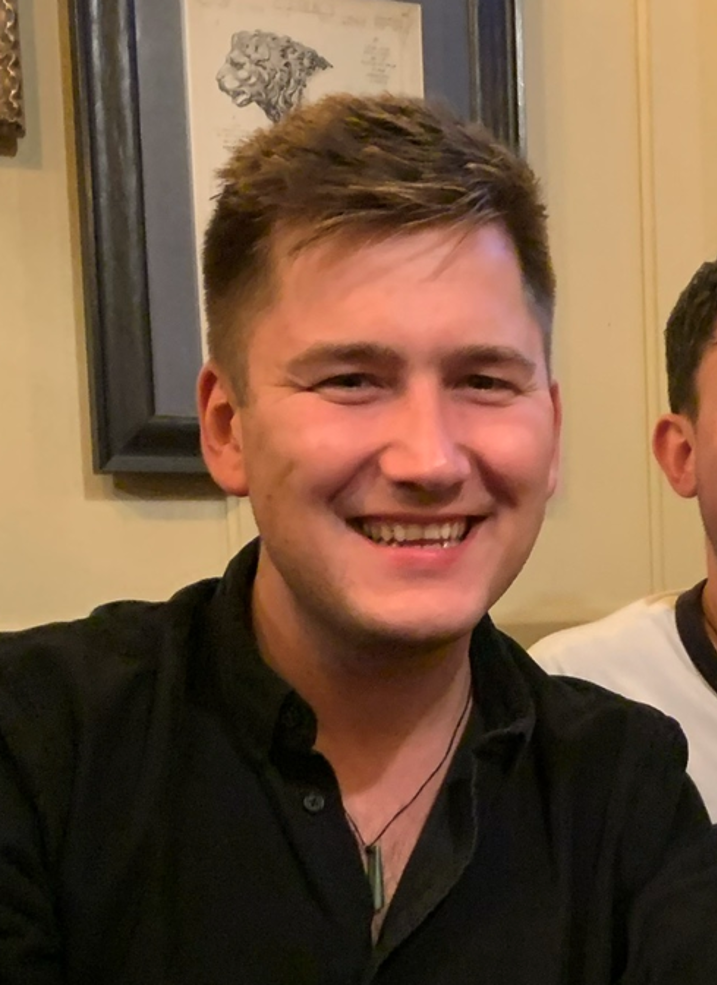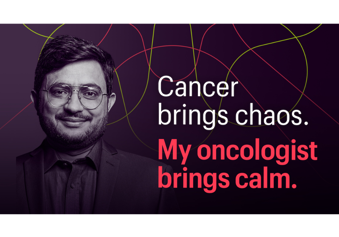A day in my life… as a clinical oncology trainee
Dr Alexander Pawsey
Speciality Registrar in Clinical Oncology, University College London Hospital
The difficult thing writing about a ‘day in my life’ is that as a clinical oncology trainee, no two days of the week are ever the same. This is one of the main reasons I chose clinical oncology training as a career path because of the huge variety it offers.
I’m currently in my third year of specialty training working in a central London hospital. During this time, I have developed skills in radiotherapy techniques, the use of systemic anticancer treatments, been involved in research, gained experiences in procedures (like brachytherapy), worked with some amazing teams and treated incredible patients at what is often such a difficult time in their lives. I may be biased, but I can’t think of a more exciting and rewarding medical speciality – and clinical oncology really has something for everyone!
We’ve recently rotated at my hospital (we change ‘tumour sites’ every six months or so) and I have started working with the Head and Neck Team. I’m going to take you through today (my first Thursday with the team) to give you an idea of what it involves, but bear in mind that this is very different to yesterday – and will be different from tomorrow.

08:30
I get to work early. One of our medical oncology consultants is doing a teaching session on penile cancers and with exams on the horizon, I can’t miss any opportunity for a bit of education.
09:00
One of our patients who is having palliative radiotherapy for a neck mass has arrived and I go down to the department to help the radiographers set him up. Radiographers work many other roles, but in the radiotherapy department they help to set up and deliver the treatment to our patients. This patient needs bolus, a material placed over the area we are treating, to make sure we get the right dose to the tumour, and it is up to me and the team to determine the thickness, cover and where this is placed.
I use his previous scans and clinical examination to help and with the aid of a marker and some scissors, we get something which works perfectly. One of our new trainees hasn’t seen this before so he joins, and we stick around for a bit afterwards to see how our head and neck shells are made and show the trainees our new 3D printer, which is being used in our department to make the bolus.
09:20
The on-treat clinic starts. When patients are undergoing radiotherapy, they usually get seen regularly to check for toxicity and ensure there are no issues. In this clinic, I will also see anyone having chemotherapy as well, so I check in with the patients, prescribe the supportive medications they need and sign their chemotherapy plans. For most of the new starters this is more of a friendly chat, but for those towards the end they often need a bit of support – dieticians, speech and language therapists and our clinical nurse specialist on standby.
12:00
The patient we placed the bolus on earlier has been scanned, so I delineate exactly where we want the dose to be delivered on the CT scan to help radiographers with radiotherapy field placement.
12:30
Lunch. I would normally have my ward round at this time, but there are no inpatients, as we try to manage all our patients as outpatients, so only admit if absolutely necessary.
13:00
I join a meeting with the intensive therapy unit team discussing neurotoxicity in patients treated with immunotherapy – ‘some great discussions’.
14:00
I meet up with the radiographers to discuss some of the day-to-day changes seen in our patients going through treatment. If there are major changes, for example, if the patient loses weight this can affect the dosimetry and risk coverage of the tumour and affect the dose delivered to at-risk normal tissues (like the spinal cord).
We have asked the physics department to evaluate the new dose to these tissues in one patient because of changes noted during treatment. It’s also now time to review the palliative plan from earlier. They’ve done a great job covering the neck tumour while keeping the dose off the patient’s oral cavity and oesophagus to minimise side effects, so I sign it off.
15:00
I have a catch-up call with a consultant followed by some time to go through emails and answer a few acute queries. I then go through the scans and pathology reports for the patient I’ll be planning the radiotherapy for tomorrow. There are a lot of things to consider, and I want to make sure I’m prepared to get started straight away in the morning. That takes us up to 17:00 when it’s time to head off.
I hope this glimpse into my daily life has given you a real insight into the huge variety of the role. As I mentioned at the start, no two days are the same and I couldn’t imagine working in any other field.
Dr Alexander Pawsey
Speciality Registrar in Clinical Oncology, University College London Hospital
Choose oncology
An incredibly diverse and rewarding career, working in clinical oncology might be the perfect fit for you.
